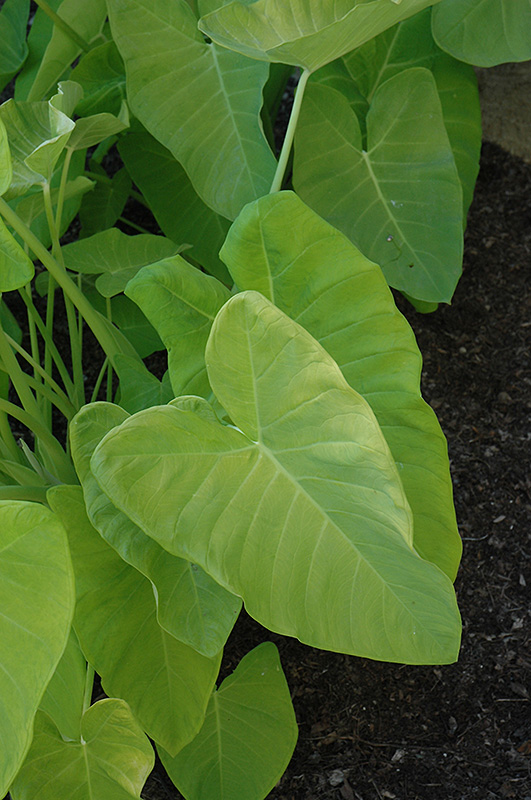Lime Zinger Elephant's Ear
Xanthosoma 'Lime Zinger'
Height: 4 feet
Spacing: 3 feet
Sunlight:
![]()
Hardiness Zone: 7b
Description:
This variety produces large chartreuse to lime green heart shaped leaves, creating a tropical look; blooms infrequently, but flowers are interesting; thrives in hot, humid conditions; great container plant as well
Ornamental Features
Lime Zinger Elephant's Ear's attractive large heart-shaped leaves remain lime green in color throughout the year on a plant with an upright spreading habit of growth. It features unusual spikes of creamy white flowers with buttery yellow bracts rising above the foliage in mid summer.
Landscape Attributes
Lime Zinger Elephant's Ear is an herbaceous evergreen perennial with an upright spreading habit of growth. Its relatively coarse texture can be used to stand it apart from other garden plants with finer foliage.
This is a relatively low maintenance plant, and should never be pruned except to remove any dieback, as it tends not to take pruning well. It has no significant negative characteristics.
Lime Zinger Elephant's Ear is recommended for the following landscape applications;
- Accent
- Mass Planting
- General Garden Use
Planting & Growing
Lime Zinger Elephant's Ear will grow to be about 4 feet tall at maturity, with a spread of 4 feet. When grown in masses or used as a bedding plant, individual plants should be spaced approximately 3 feet apart. It grows at a medium rate, and under ideal conditions can be expected to live for approximately 10 years. As an evegreen perennial, this plant will typically keep its form and foliage year-round.
This plant should be grown in a location with partial shade. Keep it away from hot, dry locations that receive direct afternoon sun or which get reflected sunlight, such as against the south side of a white wall. It does best in average to evenly moist conditions, but will not tolerate standing water. It may require supplemental watering during periods of drought or extended heat. It is not particular as to soil type or pH. It is highly tolerant of urban pollution and will even thrive in inner city environments, and will benefit from being planted in a relatively sheltered location. Consider applying a thick mulch around the root zone in winter to protect it in exposed locations or colder microclimates. This particular variety is an interspecific hybrid. It can be propagated by multiplication of the underground bulbs; however, as a cultivated variety, be aware that it may be subject to certain restrictions or prohibitions on propagation.


